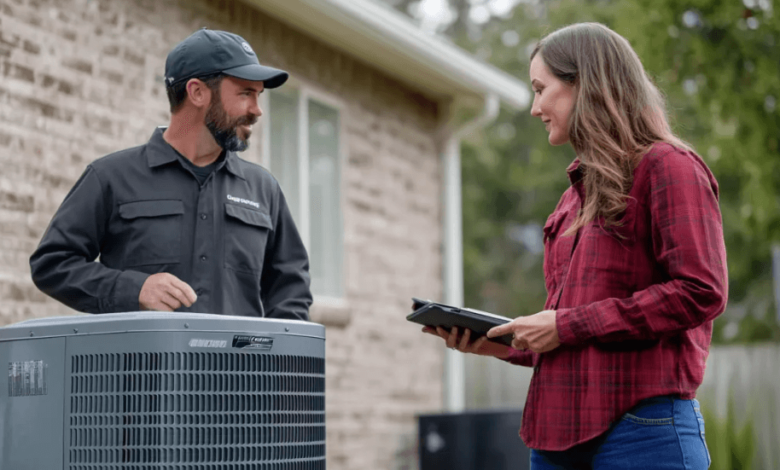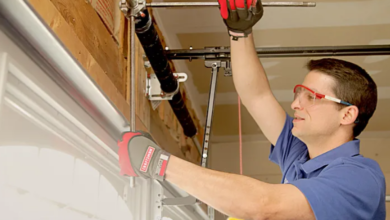Why is Seer Rating a Critical Factor for Energy Efficiency?

The SEER rating, or Seasonal Energy Efficiency Ratio, is a key measure of an air conditioning system’s energy efficiency. Systems with higher SEER ratings consume less energy to cool a space, resulting in lower electricity bills and a reduced environmental impact. With seasonal HVAC tune-ups by Beltway Air Conditioning & Heating, homeowners can ensure their units maintain optimal efficiency. This rating also helps consumers compare units and choose energy-efficient systems that best meet their needs.
Understanding SEER Rating
SEER or Seasonal Energy Efficiency Ratio is a measure that tells the cooling efficiency of an air conditioning unit in a whole season. It is determined by dividing the cooling output that is produced in a normal season by the amount of energy added to it. This ratio assesses the efficiency of an air conditioner or heat pump in terms of energy consumption in order to dehumidify the air and maintain the desirable temperatures inside the building, which is why it is a decisive factor in the selection of efficient HVAC units.
SEER ratings offer a standardized rating procedure in which to compare units. As an illustration, two systems generating the same cooling output will use less energy with the higher SEER. Simply changing a SEER 15 to a SEER 20 system, e.g., may result in saving up to 33 percent of the power consumed by the unit.
The needs of efficiency depend on household requirements and climate. Extremely hot areas have more to gain with high SEER ratings because cooling will last longer. Moreover, minimum standards of SEER vary within the U.S.–SEER 14 is required in the South and Southwest, whereas in northern states, SEER 13 is required. This cognizance of such rules assists homeowners in choosing systems that have an optimum energy efficiency.
One should also draw the line between SEER and SEER2 ratings. SEER2 also takes into account variations in temperature occurring on a seasonal basis, which provides a better estimate of unit performance. Suspects like non-balanced temperatures in the house or increasing energy expenses might indicate the necessity to use a higher-SEER system that would allow attaining a better level of comfort and savings.
See also: Transform Your Home with Art: How Paint by Numbers Brings Personality to Every Room
Why SEER Rating Matters
SEER or Seasonal Energy Efficiency Ratio is a rating covering cooling systems, including the new air conditioning systems. The smarter a device is, the greater the SEER2 rating that profoundly influences the use of energy, environmental sustainability, and utility costs.
1. Financial Savings
Better systems with a higher SEER rating help in a significant reduction in monthly energy bills. Some have enormous payoffs, such as replacing a SEER 10 with a SEER 16 reduces cooling by nearly 40 percent, or saves $375-400 a year.
These savings will accrue over the lifetime of a system, overriding the initial high cost of a high-SEER unit. The initial price may seem to be high, but the energy savings make it cost-effective in the long run.
2. Enhanced Comfort
High-SEER units can also use any advanced technologies, including variable-speed compressors, which can keep the indoor temperatures constant even when the weather is extremely harsh.
They are also quiet and offer the best humidity control, which increases comfort in hot and humid climates, keeping the air in a house fresh and comfortable.
3. Environmental Impact
High-SEER systems make lower carbon footprints and greenhouse gas emissions by using less power. An example is the use of the HVAC systems that consume low amounts of energy to support the global sustainability program by decreasing fossil fuels.
The use of these kinds of systems contributes to cleaner and greener energy consumption, and that is aligned to help avoid climate change and safeguard the planet for generations to come.
4. Future-Proofing
As the SEER criteria in 2025 will require higher minimum ratings of HVAC units, buying a high-SEER unit today guarantees that the future regulations will be adhered to. Such systems are also scalable to other possible future energy-efficient advancements, thus a prudent long-term investment.
5. Property Value
Homes that are well-maintained with high-SEER and well-developed HVAC systems attract more buyers because of reduced utility bills and a high level of maintaining the home. Energy-saving systems, especially high SEER2 rating, increase the resale value of the property, and this would warrant investment by the homeowners intending to sell.
Decoding Efficiency Metrics
HVAC efficiency is measured using a few different metrics, with SEER being an important one for cooling. SEER measures total cooling output divided by energy used over a cooling season. Unlike single-point metrics such as EER, which represent efficiency under peak conditions, SEER captures seasonal variation and is therefore more representative of residential systems operating in variable climates.
Together with SEER, metrics such as HSPF give a peek into heating, thus giving a more holistic picture of system efficiency.
SEER vs. EER
The difference between SEER and EER is their use. SEER is a seasonal measure of efficiency that covers the entire cooling season, incorporating variations in the temperature. This is especially applicable for homes in areas with inconsistent weather.
EER, however, evaluates performance at such peak conditions – such as a constant 35deg °C (95deg F) outside. Systems in frequently hot climates, such as tropical or desert areas, may warrant greater attention to EER numbers. Still, both metrics are vital.
As an illustration, a unit that has high SEER and low EER might perform excellently in mild conditions and fail to do so during a heatwave- hence the importance of a balanced analysis.
SEER vs. HSPF
If SEER has to do with cooling, HSPF gauges the efficiency of heat pumps in terms of heating. The highest score in any of them equates to energy savings throughout the year. As an example, a SEER and HSPF of 18 and 9 heat pumps provide efficient cooling in summer and efficient heating in winter.
When the homeowner deciphers these metrics, they will be able to select a hybrid system that will suit the climate and mixed weather conditions of such areas to their fullest benefit in terms of comfort and reducing energy expenditure.
Global Standards
SEER requirements vary in the world. The federal standards in the U.S. are at least SEER 13 in new systems, although some jurisdictions have higher requirements. EER and COP (Coefficient of Performance) are used internationally to complement SEER, local climate, and energy policy.
The adherence to these standards will ensure the highest levels of productivity and adherence.
Making Energy-Smart Choices with SEER Ratings
One of the most important aspects in determining energy efficiency is the SEER rating. The improvement of ratings is usually accompanied by a decrease in energy payments, environmental considerations, and stability in performance. Although the decision whether to buy the SEER rating is based on the climate, home area, and budget, the long-term financial and environmental gains are usually realized in case a higher SEER system is invested in.
Homeowners looking to upgrade or replace their systems may place SEER at the heart of their priorities, as it may lead to greater comfort, efficiency, and significant savings on costs, which makes it a pillar of smart energy management.




